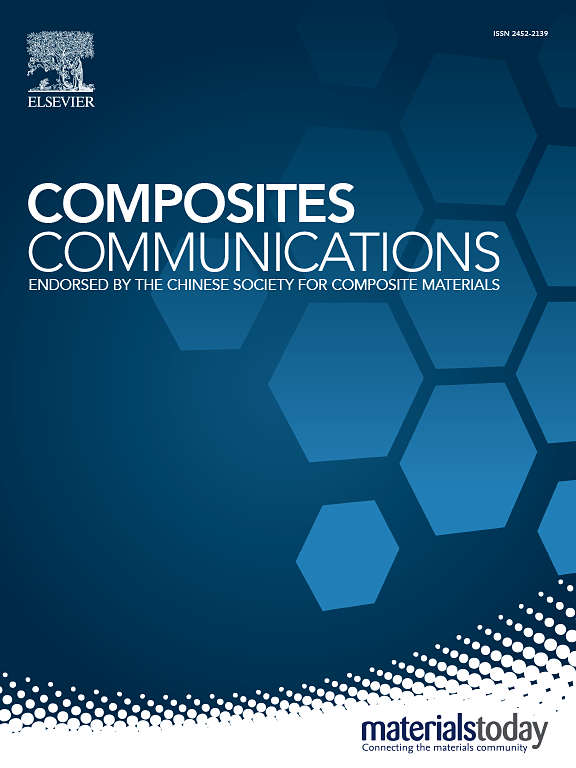Strong, ductile and transparent biaxially oriented poly(lactic acid) with low content of poly(3-hydroxybutyrate-co-3-hydroxyhexanoate) by temperature-gradient stretching: The role of mesophase
IF 6.5
2区 材料科学
Q1 MATERIALS SCIENCE, COMPOSITES
引用次数: 0
Abstract
Polylactic acid (PLA) is an ideal material for fabricating low-carbon, environmentally friendly biaxially-oriented stretch films due to its significant application potential in sustainable packaging. However, biaxially-oriented PLA films exhibit inherent brittleness, and the role of the PLA mesophase in governing their physico-mechanical properties remains unclear. In this study, microbial poly(3-hydroxybutyrate-co-3-hydroxyhexanoate) (PHBH) was employed as a novel toughening agent, which was melt-blended with PLA to simultaneously enhance toughness and stretchability. Subsequently, biaxially-oriented PLA/PHBH films (BO-PLA/PHBH) with controlled mesophase contents but comparable crystallinity and orientation were fabricated through one-step and temperature-gradient stretching methodologies. The temperature-gradient stretched BO-PLA/PHBH containing 8 % mesophase achieved a tensile strength of 153 MPa, while notably maintaining an elongation at break of 80 % and optical transparency of 92 %. The mesophase serves as a structural bridge between crystalline and amorphous domains, facilitating stress transfer and thereby enhancing mechanical strength. This study proposes a scalable, industrially viable strategy for manufacturing fully biodegradable PLA/PHBH films with superior rigidity-ductility balance.
求助全文
约1分钟内获得全文
求助全文
来源期刊

Composites Communications
Materials Science-Ceramics and Composites
CiteScore
12.10
自引率
10.00%
发文量
340
审稿时长
36 days
期刊介绍:
Composites Communications (Compos. Commun.) is a peer-reviewed journal publishing short communications and letters on the latest advances in composites science and technology. With a rapid review and publication process, its goal is to disseminate new knowledge promptly within the composites community. The journal welcomes manuscripts presenting creative concepts and new findings in design, state-of-the-art approaches in processing, synthesis, characterization, and mechanics modeling. In addition to traditional fiber-/particulate-reinforced engineering composites, it encourages submissions on composites with exceptional physical, mechanical, and fracture properties, as well as those with unique functions and significant application potential. This includes biomimetic and bio-inspired composites for biomedical applications, functional nano-composites for thermal management and energy applications, and composites designed for extreme service environments.
 求助内容:
求助内容: 应助结果提醒方式:
应助结果提醒方式:


